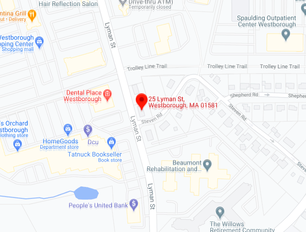The Art of Art TherapyBy Niamh Smithers, M.A.
This spring I had the pleasure of attending a webinar called “Nurturing the “Art” in the Art of Therapy” hosted by Victor Yalom, PhD and Judy Rubin, PhD, ATR-BC. Dr. Yalom facilitated a discussion with Dr. Rubin about her experience as a Registered Art Therapist with over 50 years of experience; reviewing some of her favorite moments as an art therapist, showing recorded demonstrations of art therapy sessions, and exploring how she views the use of art in the therapeutic process. As someone who has always aspired to incorporate art into counseling sessions, this webinar gave me so much insight, inspiration, and motivation to offer more art-therapy based interventions to my clients. One of my favorite parts of the webinar was seeing Dr. Judy Rubin on an episode of Mr. Roger’s Neighborhood, a classic show that aired beginning in the late 1960’s. In the episode, Dr. Rubin showcased how children engaged in art, creativity, and exploration of ideas. She appeared authentically inspired by each child’s artwork and how their perspectives informed how and what they created with materials she provided. Dr. Rubin emphasized the importance of “play” and “choice” when using art as a tool for exploring oneself and one’s experiences, while also highlighting there is no age limit for this type of intervention. Dr. Rubin discussed how many of her clients who had been resistant to incorporating art into their therapy sessions were often artists themselves who were focused on the “final product” or were individuals who struggled to engage in “play.” As an artist myself, this idea resonated with me due to often having my art evaluated or critiqued in classes or by people close to me. The idea that someone would be interpreting or making judgements about the art that I was creating made it much harder to focus on the process and having fun. This webinar reminded me of one of my favorite phrases when it comes to art and therapy alike: “Process over product.” Dr. Rubin also introduced the idea of approaching art as another language and stated, “By only using words we are limiting the information.” Story-telling and use of imagery are important components of many cultures across the world, and this quote really validated what I have felt for many years, even before becoming a therapist: Art is a universal experience and can be a powerful change agent when used in the therapeutic process. Dr. Rubin shared, “You don’t have to be an artist to do art therapy. It’s not about being an artist, it’s about expressing yourself in a different language.” Similar to how words can be lost in translation between languages, Dr. Rubin noted the imperativeness of maintaining the client as the expert and asking questions about a client’s art or artistic process, rather than making interpretations, translations, observations, or judgements. She explored how art therapists may sometimes offer premature responses to a client’s art and reiterated the importance of getting to know oneself as a provider in an effort to prevent our own experiences from blending into the client’s: “Get to know yourself to prevent your own interpretations clouding message of the client.” My hope is that, by giving clients more choice in how they use their time in sessions and having various art supplies available, utilizing art in therapy may lead to deeper connection, understanding, and exploration, or, at the very least, lead to a client trying something they’ve never tried before! Comments are closed.
|
Archives
May 2025
Categories |
Mission Statement
Castlebrook Counseling Services, Inc. is a group of private practice clinicians with a shared goal of strengthening our community by providing therapy and clinical support designed for children, adults, and families to successfully meet life’s challenges.
 RSS Feed
RSS Feed

